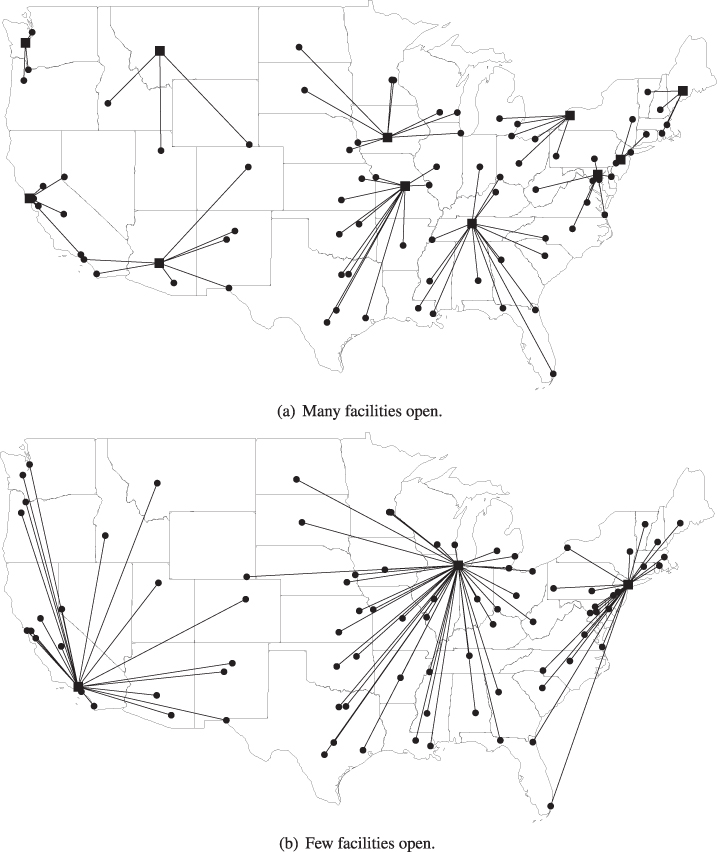Chapter 8 Facility Location Models
8.1 Introduction
One of the major strategic decisions faced by firms is the number and locations of factories, warehouses, retailers, or other physical facilities. This is the purview of a large class of models known as facility location problems. The key trade‐off in most facility location problems is between the facility cost and customer service. If we open a lot of facilities (Figure 8.1(a)), we incur high facility costs (to build and maintain them), but we can provide good service since most customers are close to a facility. On the other hand, if we open few facilities (Figure 8.1(b)), we reduce our facility costs but must travel farther to reach our customers (or they to reach us).

Figure 8.1 Facility location configurations. Squares represent facilities; circles represent customers.
Most (but not all) location problems make two related sets of decisions: (1) where to locate, and (2) which customers are assigned or allocated to which facilities. Therefore, facility location problems are also sometimes known as location–allocation problems.
A huge range of approaches has been considered for modeling facility location decisions. These differ in terms of how they model facility costs (for example, some include the costs explicitly, while others impose a constraint on the number of facilities to be opened) and how they model ...
Get Fundamentals of Supply Chain Theory, 2nd Edition now with the O’Reilly learning platform.
O’Reilly members experience books, live events, courses curated by job role, and more from O’Reilly and nearly 200 top publishers.

